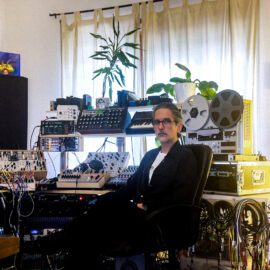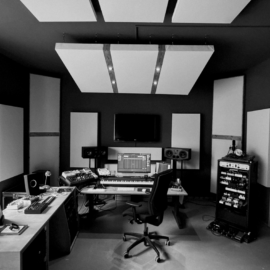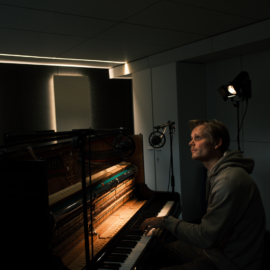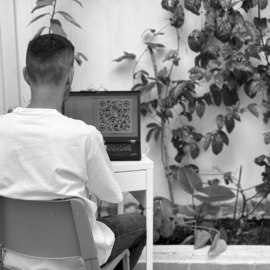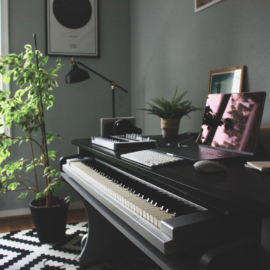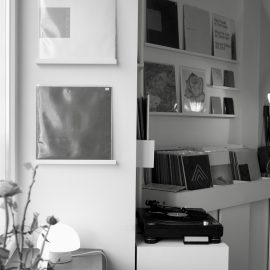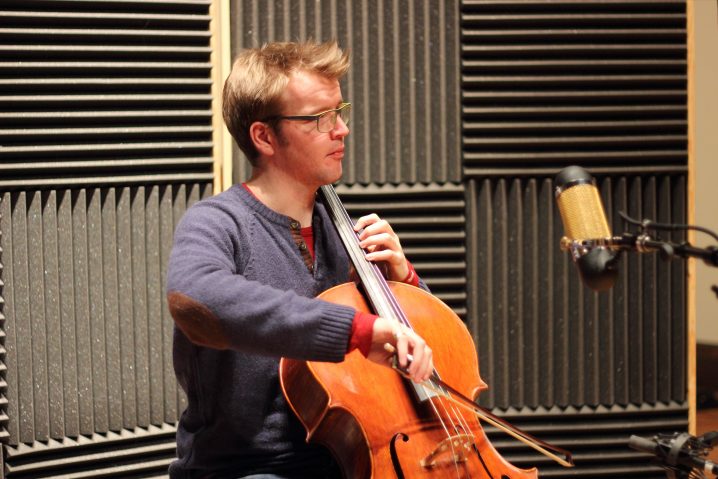
Lets start at the very beginning. Can you tell us how you got involved in composing, and what was your very first piece of gear?
I got into composing truthfully because we had to when I was at school. In the UK, we do these exams when we’re 13-14 years old or so called GCSEs, and one of the requirements is to submit some compositions. I played a lot by ear when I started playing the cello, before I could properly read music, so was happy enough improvising, but really enjoyed putting those ideas down on paper. I got really into taking things further when I was 15 and met a guy called Philip Sheppard. He had this crazy electric cello and some pedals and made weird sounds; I was hooked! We kept in touch, and a few years later, I went to the Royal Academy of Music in London to study with him! I suppose my first piece of gear was a cello, but a less annoying answer would be a laptop with a dummy keyboard. I’m a terrible pianist and have atrocious handwriting, so really getting to terms with Sibelius (the software, not the Symphonist!) was immense!
How many different studio iterations have you gone through, and what does your final setup look like right now?
I’m a low requirements sort of person. I wrote my previous album in Studio Mute, with some of Daniel Miller’s legendary synths and delicious outboard, but I then wrote my score to “A Little Chaos” between my flat and a tiny room in Soho next to the editing suite – I had my laptop, Pro Tools, and the same MIDI keyboard! It was during scoring ALC that I bought myself a Minimoog, so that joined the party around then, but it’s really simple. I now work on a lot of big Hollywood style movies, often recording the solo cello parts remotely and sending them off to the mix, so my requirements have upped somewhat. I share a production room with a fabulous mix engineer called Joe Rubel at Tileyard in London; it’s a 5.1 room with some tasty outboard gear, some twinkly lights, and an overworked kettle. My writing rig, however, fits in my rucksack. I’m very low maintenance; noise cancelling headphones, 2 external hard drives (for samples), an iLok, a punchy powerful laptop, and a teeny weeny USB MIDI keyboard. It’s exactly what I use in the studio to write with, the only difference is I don’t carry two extra displays and a full size keyboard when I’m travelling.

Talk a bit about your favorite cellos.
I was very fortunate to play an astonishing Techler recently for a week in New York. It was just astonishing – the C string was like a sports car revving its engine!! If money were no object, I’d have bought it on the spot, but I’m not sure I could afford the insurance premium! My own cello, a 1987 Colin Irving from England, is fabulous. It’s the best recording cello I’ve ever played; it’s so even and natural sounding. I love it!
Besides the cello, tell us about your favorite piece of hardware.
I just bought a Bricasti M7 reverb unit which, honestly, I can’t say enough good stuff about. It’s incredible – just so fresh sounding, and makes everything sound expensive. Besides that, I’d have to say my Minimoog. I love it and all the weird crazy sounds you can crank from it!
And what about the software that you use for production?
Because I work with a lot of other composers, often very late in their writing schedule, it’s just practical for me to work in whatever software they’re working in, so most weeks I’m flitting between Cubase, Logic, Pro Tools, and Live. It’s actually quite straightforward once you take the time to unify all the keyboard shortcuts, but when I started, it was a total nightmare, like, “how do I do this again?!” Crazy. Right now, though, I’m on a project which means spending a lot of time in Cubase, but I’m most comfortable somewhere between Logic and Pro Tools. Ultimately, they all do the same thing; you either have a musical idea, or you don’t.

Is there a particular piece of gear that you’re just dying to get your hands on and do you think one day you’ll have it?
I know you asked about one piece of gear, but I’d like a Prophet 5 and a CS-80 equally, so if it’s not too much to ask, I’ll have both thanks.
Can you please share some aspects of sound design in your work?
It’s actually very limited. I like creating as much as I can with the cello, exploring various different sul pont / sul tasto effects (bridge and fingerboard, respectively), harmonics, bow effects… they all work wonders and sound really expensive, especially if you run them into some funky tape delays or something. Once they’re into the computer, you can stretch, shrink, trim, and edit to your hearts content! Otherwise, cranky noise switches on synths can really pull the room together! On “Touch”, it’s all ‘organic’ sounds: that is, they’re all either made on the cello, or from the synth. There was no computer sound design or editing involved in making those sounds.
How did you connect with Sono Luminus for your latest release?
I’d known Collin since his days at Naxos – we met at SXSW when I was there promoting CELLO MULTITRACKS, which Naxos distributed. We kept in touch over the years, met up in various cities, and drank some beers. He called me a few days after “Lights In The Sky” was released, about a week after he’d accepted the CEO post at Sono Luminus, and said “we should do a record together”, and that was that!
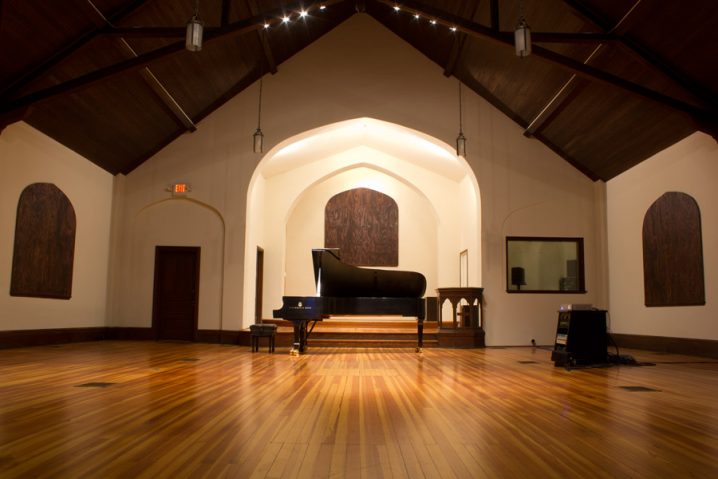
Tell us about the themes explored on your new album.
I love the idea of taking really simple ideas, be they harmonic, melodic, or textural, and “zooming in” until there’s nothing left to explore. Really close mic techniques, really simple harmonic structures… it allows so much performance space, so much room for interpretation for both the performer, and the listener. As I think I said in the programme note, this album isn’t explicitly about anything, but if it’s about anything, it’s about resolution. Summing up a period in one’s life, personally, creatively, professionally, and trying to draw a line under it.
What are some of the new techniques that you tried out on “Touch”?
The major breakthrough here was how we treated the synths. They were “re-amped” back into the hall when we were tracking the cello solos, so all the sounds were intermingling. It also meant I wasn’t wearing headphones, and was actually performing with something. Often, tracking a solo album is by definition a very dry, artificial process. This felt like performing music all of the way.
The whole album was conceived to be recorded in 9.1 surround. I wrote the music for it, and we set the studio up to record it, but realising that sound world was incredible because obviously we only have two ears, but in the natural world are so finely attuned to perceiving space, depth, and speed by sound alone, that it was really terrific to explore that through music.
We also kept the cello sound really simple, and to my ear, it’s the best recording sound of my cello yet. It’s so natural, so easy going. It’s not a recording of my cello, it’s just my cello on record, and I love that.
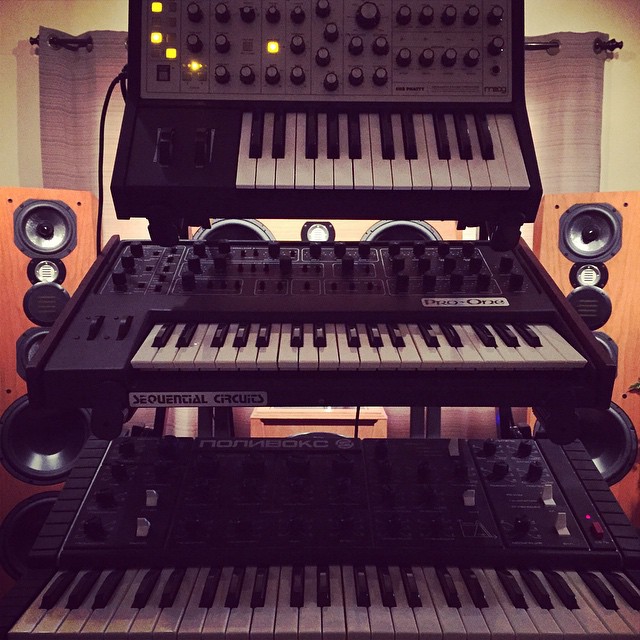
Describe the recording process at Sono Luminus studio.
They were very, very long days. It was meticulous, and working with Dan Shores, Dan Mercurio and Collin was a rare treat; they were closely involved in the months leading up to recording as I was writing the album, so we were kind of A&R-ing it as I wrote. It also meant when I turned up, they knew the scores as well as I did, so we could hit the ground running, which was just as well because we have 52mins of music to record in 5 days!
We started with the synths, tracking and placing them ready to be amped in the space (see photo above). Then, awkwardly, we moved onto the piano. Now, it should be noted, I’m a terrible but enthusiastic pianist. I love to tinkle, but wouldn’t ever be asked by anyone other than myself to play..! So, an entire day was spent recording my very simple piano parts, and John the wonderful technician from Steinway came to Boyce, VA, and prepared and maintained the piano while I bashed through!
Once that was sorted, the string players arrived from the wonderful Inscape. If you’ve heard the record in surround, you’ll know there’s a string ensemble at the front, and one at the back. Well, it’s all the same people! We set the room up with the violas to my left (I was conducting), violins in the middle, then cellos and bass to the right. The idea here was to fill up as much of the stereo image as possible, and as it was tracking up and up, not get too heavily skewed with the tune being opposite the bass.. hard to tell how it would have sounded otherwise, I’m sure it would have been lovely, but in “Touch” (track 6), I think that’s where the real oomf comes from, it’s the fast violin figure slap bang in the middle, and everything else evolving around it. If they were on the far left, it would be a lot lighter and Baroque sounding.
Finally, we recorded the cello solos, and spent a few days on that… after all, it is nominally a cello record! As I mentioned earlier, we were amping the synths at the same time, so a lot of care had to be taken not to make too much noise or too many mistakes! For me, this was certainly the most satisfying way to record the cello, because it really felt like chamber music. Granted, there weren’t other performers playing the synths as I played the cello, but just the sounds dancing around in the same space, that was enough. If nothing else, I’ll be happy if people can hear the freedom and musicality in this album, not how strictly it adheres to the click track!
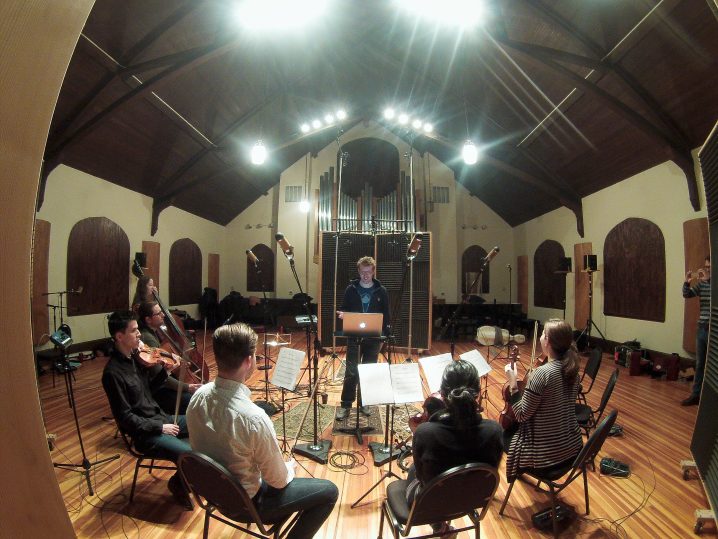
What does your live setup look like, and what do you bring with you when you travel for an extensive tour?
Everything I use on stage can be bought from an Apple Store, or, in the case of my cello mic, from a decent guitar store. This is simply because I’ve had custom electronics fail one time too many, so I stripped it all back down to a laptop and as much running in the box, as lean and simple an interface as I can find, and a cello. I use Altiverb on stage, but with the same presets as I have dialled into my Bricasti M7 in the studio; my live setup is thin and simple because my live requirements are simple, and have no desire for day long line checks!
What is the most important environmental aspect of your current workspace and what would be a particular element that you would improve on?
Well, my studio doesn’t have any windows. On one hand, this is quite good because it’s really well soundproofed and has no distractions. The downside is… no natural light! I’d like to think I could get my work done with a window, but I think I’d just stare out and watch the world go by.
What can you tell us about your overall process of composition? How are the ideas born, where do they mature, and when do they finally see the light?
Despite admitting I’m a hopeless pianist, I normally start writing at the keyboard. Nothing fancy, no elaborate writing template chock-a-block with samples or anything to confuse me, and I start there. Obviously you need to be aware of what the piece is for, the context in which it’s being performed or recorded, what instruments it’s for and suchlike; that informs so much. In film, you’re often replacing a “temp” score, so there are those considerations… but with album / art music, it’s a blank canvas. I start with a bass line and build up from there. Like anything, sometimes it comes quickly, sometimes it comes slowly. Sometimes you need to put a piece away and let it sit in the dark for a while before pulling it out and seeing where to go; other times, it’s quite straight forward. There’s no point rushing things, if it’s there it’s there, and if it’s not, it’s not. With deadlines looming, sometimes you need to rely upon “craft” to get it done, rather than waiting for *that* Eb to pop out of nowhere and solve the puzzle. I don’t think a piece ever “sees the light”; there are various shades of grey, you always want to tinker. That’s just natural!
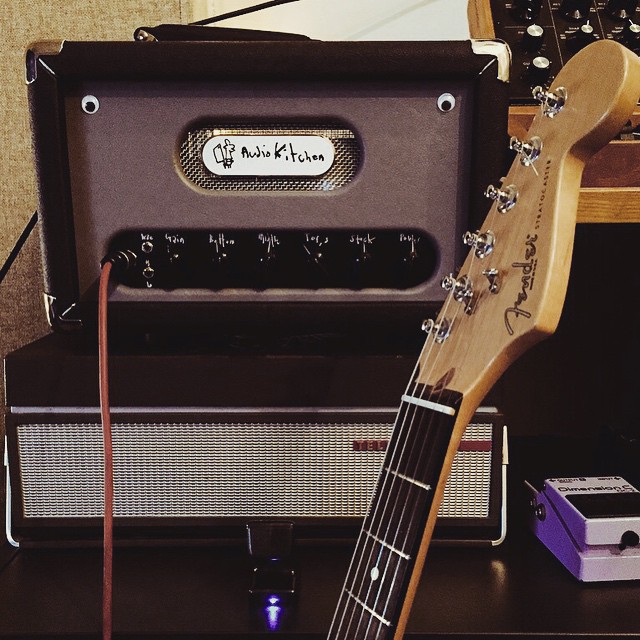
After the piece is complete, how do you audition the results? What are you reactions to hearing your music in a different context, setting, or a sound system?
I take them for a walk. I plug my headphones in and walk around my neighborhood. If I don’t feel sick on my way home, I know it’s not going too badly.
Talk a bit about your score for A Little Chaos. How is composing a soundtrack different from a studio album?
Film music’s super interesting because, unlike the music we were talking about above, it isn’t just for its own sake. It’s in a bigger narrative hierarchy, and has to somehow ‘listen’ to the movie. Tempo is so, so crucially important in film music, so I spend a lot of time finding a tempo to work in the cut of the picture. Of course, this changes as the picture is edited, but good editors are very musical people, and tend to cut in time, at least in my experience they do!
A Little Chaos was a real treat; there was no temp score, and I was able to work on it from the start of the edit with a tremendous amount of freedom to explore ideas. That said, writing an album is about creating the narrative structure, whereas in a film score, it’s about complementing the narrative structure. The music is another voice in the film, not the centre of attention. Learning to interpret what directors and producers are saying, how they describe music, how they respond to music… that’s the job. Writing a nice melody is not the hardest thing; having a thick enough skin to walk into a meeting and present a cue which you believe is the one, only to be told it isn’t emotional enough, or orange enough, or slow enough, and to turn around and say “you’re absolutely right, I’ll do it again”. You have to learn how to pick your battles!
I guess it’s not far off A&R-ing a pop record, where someone else is guiding that arc. “Touch”, for example, hardly felt like it was being A&R-ed because it was a soft, ongoing process. Ultimately, music in any situation has to tell a story. It either does, or does not, connect. Writing music that connects with people is a daily, yearly, lifetime struggle, whether it’s for the concert hall or the screen.

Do you ever procrastinate? If so, what do you usually find yourself doing during those times?
I spend the majority of my time thinking of the fairest way for me to have a dog. Ultimately, if it weren’t for travel and my horrendous work/life balance, I’d love to have a black lab and then I’d really get nothing done. So, for now, I watch YouTube. Also, the reality of living in London is that everything takes ages, so although there are 24hrs in a day, there are actually only 16 useable London hours, so it’s prudent to make use of them!
What gets you inspired?
I love visual art, and go to as many galleries as I can, as often as I can. I’m an obsessive walker so love getting lost in new cities, or rediscovering familiar ones. I also listen to all sorts of weird and wonderful music, from far flung world musics to the Top 10, to Bach to the Beatles, I’m not fussy. I love anything that’s well produced!
And finally, what are your thoughts on the state of “electronic music” today?
I’m painfully optimistic and think everything’s great. I’m just excited that I get to do this for a living!

